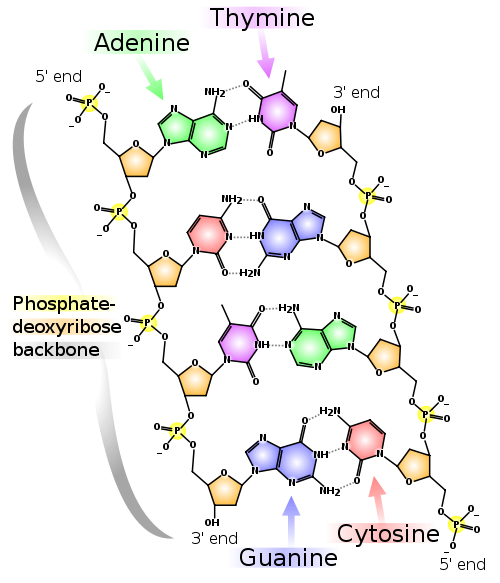Last week, NASA announced a press conference that was hyped to the extreme. Some believed NASA would announce an alien life form, or perhaps an organism that used something other than DNA to store it’s genetic information. Sadly, what they announced was neither of these, but instead an interesting little quirk of biology.
Writing in Science, NASA scientists announced that they had discovered an extremophilic bacteria in Lake Mono, California, which has a pH of almost 10, and contains high levels of arsenic. When they cultured this bacteria in the lab, they found that it could grow in growth media which had phosphate replaced with arsenate, conditions that would usually be toxic to any other bacteria.
Then (and this is the fascinating part) they found that the bacteria were actually incorporating the arsenate into their biochemistry, including reaction pathways and their DNA. Usually, arsenic is toxic because it is similar enough to phosphorous that it competes with it, stopping various biochemical apparatus from functioning properly (they are in the same group of the periodic table). However, this organism could substitute the arsenic for phosphorus, and the biochemical pathways remained intact.
This seemed to be where the confusion with DNA comes in. The structure of DNA is well understood, and integral to this structure is a phosphate backbone. As this extremophile can substitute the phosphate for arsenate, it technically has DNA which is different to any other organism. However, this change is cosmetic, the code is exactly the same (as far as we know). It would be like painting your house a different colour then claiming that you had a completely new house.
In fact, this phenomenon was quite predictable. Arsenic is “one below” phosphorous in the periodic table, just as sulphur is “one below” oxygen. Extremophiles have been found living where oxygen is scarce but sulphur is plentiful. These organisms can substitute oxygen with sulphur, so it should come as no surprise that organisms exist that can substitute phosphorous with arsenic.
In conclusion, this is a fascinating discovery, but not earth-shattering. Don’t believe the hype!

This is somewhat moot as it looks rather like the research is simply wrong (http://scienceblogs.com/webeasties/2010/12/guest_post_arsenate-based_dna.php) but I must quite profoundly disagree with what you’re saying: this, if true, would be *extremely* surprising.
Your comparison to oxygen substitution by sulfur-reducing bacteria is out of whack. They’re using sulfur as an electron receiver, they do not replace oxygen with sulfur in their biochemistry (that’d be like swapping all the O’s above with S’s). In fact, there are a great many other terminal electron receivers known, including Arsenic itself.
In terms of changing the biomolecules themselves, there’s really nothing “simply” about replacing P with Ar. That would alter the shape of the DNA molecule itself, shifting its winding patterns and altering the distances between base pairs. This would mean that enzymes that interact with DNA (of which there are many) would, in most cases, no longer achieve the highly specific binding required.
Arsenate also spontaneously disassociates far more easily than phosphate, meaning that a DNA molecule built with arsenate would hydrolyse into tiny pieces within moments of being placed in aqueous solution. And that’s before you consider the many other ways in which phosphate is involved in cell metabolism and the ways these pathways cross and interact. An organism using arsenic instead of phosphorous would need to deal with differences in the energy release from ATA compared to ATP, differences in the effect of arsenylating rather than phosphorylating proteins and the stability implications in doing so, etc., etc.
So if confirmed this bacteria would have to display a truly stunning number of adaptations in order to actually use arsenic in place of phosphorous.
P.S. 4-1 😀
Thanks for the feedback Jack! I suppose my comments about one element “replacing” another were too sweeping, and if they were able to replace ALL phosphorous in their biochemistry with arsenic that would be amazing. Thanks for your more detailed insights into biochemistry.
I also didn’t make a point about the PR tactics here. If this discovery was just published in Science, not that many people would care. But, it looks like NASA fed little bits and pieces to the media, and the media hyped it up, so now everyone is talking about it. I wonder if it was timed to coincide with the announcement of extraterrestrial oxygen in order to confuse people?
PS 2-1 at the weekend 🙂